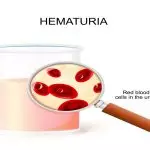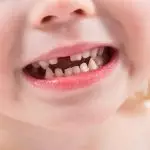
Leukaemia in Children – Symptoms, Diagnosis and Treatment by Dr. Stalin Ramprakash
12 min readWritten by Editorial Team


When we think of cancers, we typically think of “stages” or tumour growths. Tumours are abnormal growths of tissue as a lump. However, there are some types of cancer where patients don’t develop tumours or it spreads in stages. Leukaemia is one such type of blood cancer. It leads to the overproduction of cancerous white blood cells (WBCs) and usually starts in the bone marrow where normal blood cell production takes place. These abnormal cells circulate in the body and disrupt the patient’s healthy cell production capabilities.
Leukaemia is the most common cancer among children. On average, thousands of children are diagnosed with leukaemia every year. Thankfully, the survival rate for childhood leukaemia has improved significantly in the past three decades. Still, some forms of childhood leukaemia (e.g., acute lymphocytic leukaemia) can spread very quickly. All parents must learn the warning signs of childhood leukaemia. Here’s the complete guide.
In This Article
- Basics of Leukaemia
- Causes of Leukaemia in Children
- Types of Leukaemia in Children
- Symptoms of Leukaemia in Children
- Diagnosing Leukaemia in Children
- Treating Leukaemia in Children
- Side Effects of Leukaemia Treatment in Children
- Post Treatment Care and Precautions
- Social and Emotional Issues During and After Treatment
- Survival Rates of Children With Leukaemia
- FAQ’s
Basics of Leukaemia
Leukaemia is a type of cancer that impacts the child’s WBCs. WBCs are also called leukocytes; hence the disease is called “Leukaemia”. Leukocytes or WBCs are responsible for fighting infections and foreign pollutants in the body. The bodies of children with leukaemia can’t fight these infections. That is why these children are also prone to picking up other diseases like viral or bacterial infections.
Leukaemia originates in the child’s bone marrow. This spongy material found inside bones is responsible for producing WBCs, red blood cells, and platelets. The presence of leukemic WBCs blocks the bone marrow, hampering its ability to produce healthy cells. The abnormal WBCs may also enter the bloodstream and spread to other body parts such as the lymph glands, chest, liver, spleen, or sometimes even the brain. Most children who get treatment for the disease will find a complete cure for it.
Causes of Leukaemia in Children

Cancer research experts are still unsure about the exact causes of childhood leukaemia. That’s because many children with this cancer often have no serious risk factors. Doctors diagnose and treat this condition without knowing its exact origins. Research has proven that certain DNA-level changes inside bone marrow cells lead to leukaemia.
Children with chromosomal abnormalities are more likely to experience these DNA-level changes. These abnormalities can be inherited or acquired after birth. In many cases, some predisposition to develop leukaemia is present from birth. Additional environmental triggers can result in further critical changes in the DNA leading to leukaemia . We need more research before we can determine the exact causes of childhood leukaemia. That’s why doctors still haven’t found a way to completely prevent it.
Some studies claim that children who receive immune-suppressing medicines are more likely to get leukaemia. Children who receive chemotherapy treatments at very young ages also face an increased risk of leukaemia at a later date.
Here are some basic leukaemia-prevention steps for parents and medical care experts –
- Don’t expose the child to unnecessary X-rays, CT scans, or other tests that involve radiation.
- Keep children away from strong chemicals (e.g., pesticides, chemical cleaning agents, etc.).
- Quit smoking around children.
- Reduce exposure to air pollution.
Types of Leukaemia in Children
Doctors determine specific types of leukaemia in children by assessing the types of WBCs in their bone marrow and blood. The leukaemia may be chronic or acute depending on the genetic makeup of the leukemic cells. Here are the different types of leukaemia that typically affect children.
1. Acute Lymphoblastic Leukaemia(ALL)
By far the most common form of childhood leukaemia, ALL decreases a child’s ability to fight external infections. That’s because the bone marrow of children with this condition over-produces lymphoblasts. Lymphoblasts are immature, abnormal, and useless WBCs. They simply crowd the bone marrow, preventing the healthy production of WBCs, RBCs, and platelets.
This white blood cell cancer is again of two subtypes – B-cell leukaemia and T-cell leukaemia. B-cell leukaemia is more prevalent. Children with acute lymphoblastic leukaemia are classified as “standard risk”, “intermediate risk”, “high-risk” patients based on various clinical features such as age at presentation, white cell count at presentation, B cell type or T cell type, and more importantly the speed of response to treatment.
2. Acute Myeloid Leukaemia(AML)
Acute Myeloid Leukaemia affects myeloblasts inside the bone marrow. Myeloblasts are a subtype of very young versions of WBCs. They typically mature into WBCs other than lymphocytes, RBCs, or platelets. But, inside the bodies of children with AML, myeloblasts don’t develop in a healthy fashion. Instead, they fail to mature and divide rapidly out of control and prevent the production of healthy blood and platelet-manufacturing cells in the bone marrow.
3. Chronic Myeloid Leukaemia (CML)
This condition is rather rare in children. The affected leukaemic cells have an abnormal genetic factor called “BCR-ABL.” This gene triggers the overproduction of immature WBCs (instead of healthy cells), leaving the body exposed to severe infections.
ALL and AML are the most common versions of childhood leukaemia. Here are some rarer versions of leukaemia in children:
- Mixed Lineage Leukaemia (MPAL – a combination of AML and ALL)
- Chronic Lymphocytic Leukaemia (CLL)
- Juvenile Myelomonocytic Leukaemia (JMML)
During diagnosis, doctors determine the severity of this condition by reviewing many factors – age, WBC count, symptoms, etc. Doctors may also conduct bone marrow aspiration studies and biopsies to confirm the diagnosis and do some specialised investigations to detect certain changes in the leukemic cells and study the surface markers on these abnormal cells. They also assess whether they’ve spread to other body parts. Based on these details, the doctors categorise leukaemia as either AML, ALL, CML, or JMML.
[Read : List of Diseases that can be Cured and Treated by Stem Cells]
Symptoms of Leukaemia in Children

The accumulation of leukemic cells can impact a child’s body in various ways. For example, healthy red blood cells distribute oxygen to different organs in the body. When leukemic cells prevent healthy RBCs from being made in adequate amounts, children may experience a condition called anaemia. Anaemia is a disease that makes children feel fatigued. Similarly, when abnormal WBCs prevent the production of platelets, children bleed very easily and severely.
Some other common symptoms of leukaemia (AML and ALL) include:
- Fatigue
- Prolonged fevers with no identifiable cause
- Recurrent and prolonged viral infections
- Persistent or recurrent bruising
- Anorexia
- Unexplained weight loss
- Petechiae (pinpoint bleeding spots under the skin)
- Gum bleeding
- Enlarged lymph nodes
- Enlarged liver and spleen
- Joint pain
- Irritability
Bear in mind – these symptoms don’t always indicate ALL, AML, or other forms of leukaemia. These symptoms are common in many childhood diseases. That’s why most parents tend to wait for weeks before asking doctors to perform tests and determine the causes. The persistence or progression of the above symptoms when there is no other explanation should raise the suspicion.
Diagnosing Leukaemia in Children
Childhood leukaemia may cause no obvious symptoms in its initial stages. However, when doctors notice symptoms like persistent bleeding from the gums, they order blood tests and other physical exams. Blood tests reveal the number of WBCs, RBCs, and platelets inside the child’s body. The presence of excessive amounts of WBCs is one of the earliest signs of leukaemia. Rarely low counts in the blood test may raise the suspicion of leukaemia. To confirm their suspicions, cancer specialists may recommend the following diagnostic tests:
1. Blood Tests
Check WBC levels and determine the types WBCs circulating in the child’s bloodstream. Low counts of WBCs, RCBs, or platelets or high WBC counts circulating in the blood are clear warning signs.
2. Bone Marrow Aspiration

Leukaemia is a condition that originates in the child’s bone marrow. That’s why bone marrow aspiration is a critical diagnostic practice. In this process, doctors use small needles to obtain small samples of bone marrow fluids. A paediatric anaesthesiologist sedates the child and takes the necessary samples from pelvic bones. The collected cells are reviewed under a microscope. This analysis reveals the presence of abnormal or leukemic WBCs.
3. CSF Analysis

Doctors check whether there are leukaemic cells in the fluid surrounding the brain. This process of collecting this cerebrospinal fluid is also called a lumbar puncture.
4. Flow Cytometry

This is a specialised test where a bone marrow sample or blood sample helps to study surface markers on the leukaemic cells. This helps to categorise the type of cell from which leukaemia is arising (eg. ALL vs AML, T cell vs B cell, etc)
5. Genetic Test on Leukaemia Cells
Children with leukaemia have certain abnormalities in their genetic makeup called mutations. Changes in the chromosomes (chromosomes are condensed packages of DNA visible during cell division) from the bone marrow aspiration sample can give a clue regarding the type of mistake the leukaemic cells are carrying which may have prognostic value. This type of analysis is known as cytogenetics or karyotyping. Newer molecular techniques can help detect abnormal proteins made by the leukaemic cells thereby giving an idea of the mutations present in leukaemic cells.
Doctors may also order the following tests to diagnose childhood leukaemia:
- Urine tests
- Imaging tests – X-rays, MRIs (Magnetic Resonance Imaging tests) or Ultrasound tests
- Blood tests to review blood chemistry
- Liver function tests
- Kidney function tests
- Genetic tests (including parents)
[Read : Stem Cells Uses, Importance, and Potential Medical Applications]
Treating Leukaemia in Children
The good news is that most childhood leukaemia cases have high success rates for permanent cure. The type of treatment administered to a child depends on various factors such as:
- Type of leukaemia
- The child’s short and long-term symptoms
- Severity of the symptoms
- Child’s age,
- Pre-existing medical conditions (if any)
Most children with leukaemia undergo chemotherapy. Most children are cured after initial chemotherapy treatment. Rarely children may require radiation treatment or bone marrow transplants.
1. Chemotherapy
Although there are many ways to administer this treatment, all chemotherapy techniques have one purpose – to kill leukemic cells. Children can receive chemotherapy via pills, via IV (intravenous), or injections. For most children with leukaemia, several rounds of chemotherapy are more than enough to cure the condition. However, each child with leukaemia has different needs. Doctors carefully optimise the chemotherapy treatments based on these specific needs.
2. Surgery
Surgery rarely helps children with leukaemia because leukemic cells spread very quickly. It’s hard for doctors to surgically remove leukemic cells that have spread across the bone marrow. However, lymph node biopsies and bone marrow aspirations are common ways of diagnosing childhood leukaemia. Central venous catheters are often placed surgically to aid the administration of chemotherapeutic drugs and for easy blood sampling.
3. Radiation Therapy
Doctors use high-energy radiation to eliminate leukemic cells hiding in the brain and spinal cord area in some situations or as part of preparation for bone marrow transplant where chemotherapy alone was not able to cure the patient. Radiation is not a common treatment for children with leukaemia, but it’s useful in preventing the spread of leukemic cells. The potential side-effects of radiation therapy make it an unappealing treatment option for parents. Children who undergo radiation therapy may experience skin damage, hair loss (in treated areas), diarrhoea, and increased risks of infections.
4. Immunotherapy
This form of treatment of childhood leukaemia is relatively new. Immuno-therapists use medicines to program the child’s immune system to destroy leukemic cells. Common forms of immunotherapy are Chimeric Antigen Receptor (CAR), T-cell therapy, and antibody targeted against leukaemic cells.
5. Experimental Therapeutics
Many cancer treatment centres offer novel treatments for children with leukaemia. Children who don’t respond well to other treatments or therapies may benefit from these experimental techniques.
Side Effects of Leukaemia Treatment in Children
Children with leukaemia undergo intense treatment. Their organs are relatively young which means they can tolerate more intense treatment and have a higher cure rate when compared to adults. Children with leukaemia may get cured after chemotherapy. But, they may have some immediate and temporary side effects during treatment, and some other life long side effects such as
- Tumour lysis Syndrome
- Serious infection
- Persistent fevers
- Respiratory issues
- Severe nausea and vomiting
- Muscle and joint pain
- Muscle weakness
- Weight gain
- High blood pressure and blood sugar
- Nervous system issues such as feeling dizzy, lightheaded, persistent headaches, slurred speech, leg weakness, and seizures
- Loss of balance
- Bruising or bleeding
Parents of children undergoing leukaemia treatment must report these side effects to their health care teams. There are many medicines and diets that can help reduce the severity of these leukaemia treatment-related symptoms.
Post Treatment Care and Precautions

Treatment for AML, ALL, and other forms of childhood leukaemia can take months to years. Focusing on the child’s psychological and social wellbeing during the treatment period is very important. It is as critical as focusing on the child’s physical health. Many cancer treatment centres offer support programs for children undergoing leukaemia treatment. Here are some types of family support programs that parents must look into:
1. Rehabilitation Programs
These programs help children undergoing leukaemia treatment cope with weakness, fatigue, and nerve-related issues. Such issues are common after chemotherapy. Rehabilitation programs for children undergoing leukaemia treatment involve physical therapy, psychological therapy, and targeted pain relief therapies.
2. Wellness Programs
Children undergoing leukaemia treatment can benefit a lot from joining wellness programs. These programs are often attended by other parents and children who are also undergoing leukaemia treatment. Meeting such people and partaking in activities like pet therapy, psychological therapy, music therapy, etc., is very helpful.
3. Relapse Surveillance
All children undergoing leukaemia treatment have to go through this step once their treatment is complete. Doctors monitor the child’s physical progress via routine blood tests, physical exams, etc. Most children who’ve recovered from leukaemia take part in relapse-prevention programs for 1-5 years.
Despite the best leukaemia treatment and after-care, some children may experience relapses. These children need targeted cancer medications and customised treatment plans. That is why parents shouldn’t forget about the importance of after-care. Life should resume back to normal once treatment is over. But the child must undergo regular check-ups as per the doctor’s advice Follow-up care is essential for giving children who have defeated leukaemia a better chance of long-term survival and ensuring future well-being.
Another major benefit of giving children follow-up care is that it gives parents the chance to address any recovery-related concerns. Everyone who undergoes cancer treatment experiences some short and less often long-term side effects. Developing care plans to prevent these symptoms is vital. Parents must also keep adequate health insurance coverage as the risk of relapse is present for at least five years after the treatment.
Social and Emotional Issues During and After Treatment
Thanks to major advances in childhood leukaemia treatment, most patients live into adulthood. However, specialised follow-up treatment is critical to identify and address late side effects. Children who’ve been treated for leukaemia also face a higher risk of getting heart/lung problems later in life.
They may also experience learning problems due to radiation therapy as well as physical growth and development issues. Such long-term complications may bring up many social and emotional issues post-treatment. These psychological issues must be resolved by the parents and the cancer specialists. Here are some steps that may help:
- Attend school to maintain a sense of daily routine.
- Use school re-entry programs to ensure the child’s educational development is not hampered.
- Parents must partner with social workers at cancer centres to deal with financial stresses.
- Network with other parents undergoing similar experiences at cancer treatment centres.
Survival Rates of Children With Leukaemia
The long-term survival rate for children who’ve undergone leukaemia treatment is promising. Most children with leukaemia remain cancer-free for the rest of their lives. Thanks to major advances in childhood leukaemia treatment, the global survival rate of ALL is above 80%, and AML is 65-70%%. Bear in mind, these numbers are averages compiled from global databases. Each child’s survival chances and long-term outlook post-treatment will be different.
No child chooses to have leukaemia. However, several childhood leukaemia survivors claim that these experiences make them stronger in the long run. With proper support from mental health professionals, adjusting to life after leukaemia treatment is much easier.
FAQ’s
1. Can Parents Prevent Childhood Leukaemia?
It’s normal for parents to feel guilty when their children get leukaemia. The truth is that most (if not all) childhood cancers can’t be prevented. The child developing leukaemia has nothing to do with the parenting style.
2. What Caused My Child’s AML or ALL?
There are no exact answers. AML is widely suspected to be caused due to genetic-level irregularities which occur as random events and unfortunately, it happened in your child affecting critical genes controlling cell growth resulting in cancer.
3. Will My Child Die Because of Leukaemia?
The outlook for childhood leukaemia treatment is very positive. There’s a 70% – 90% chance that your kid will lead a cancer-free life after undergoing leukaemia treatment. The exact percentage depends on type and response to treatment.
4. How Long Does Leukaemia Treatment Last?
Treatment can last anywhere between six months to 3 years. Doctors prefer giving chemotherapy to children in short stages. The first six months are always the most complicated. After the first 6 to 9 months, children get used to the treatment, and typically the treatment gets lighter and children tolerate it well.
5. Can Children Go to School While Undergoing Leukaemia Treatment?
Yes. After the intensive treatment over the first 6 months is over, children should attend their school. Unless the child is feeling unwell, following a routine and being with other children is good for their mental wellbeing. However, the doctor may ask the child not to participate in certain school activities that drain their energy (e.g., sports).
Read Also: Blood Cancer in Children – Symptoms, Diagnosis, and Treatment

Editorial Team,
With a rich experience in pregnancy and parenting, our team of experts create insightful, well-curated, and easy-to-read content for our to-be-parents and parents at all stages of parenting.Read more.
Responses (0)
Want curated content sharply tailored for your exact stage of parenting?
Related articles

Meditation For Kids – Everything You Need to Know

Hematuria (Blood in Urine) in Children – Causes, Symptoms and Treatment

Sleep Talking in Kids – Is it Common and Top Tips to Deal With

Top 10 Best Audiobooks For Kids Between 4-6 Years

Toilet Training Kids With Autism – Some Helpful Tips

Early Loss of Baby Teeth – What to do?
Sponsored content
Discover great local businesses around you for your kids.
Get regular updates, great recommendations and other right stuff at the right time.





